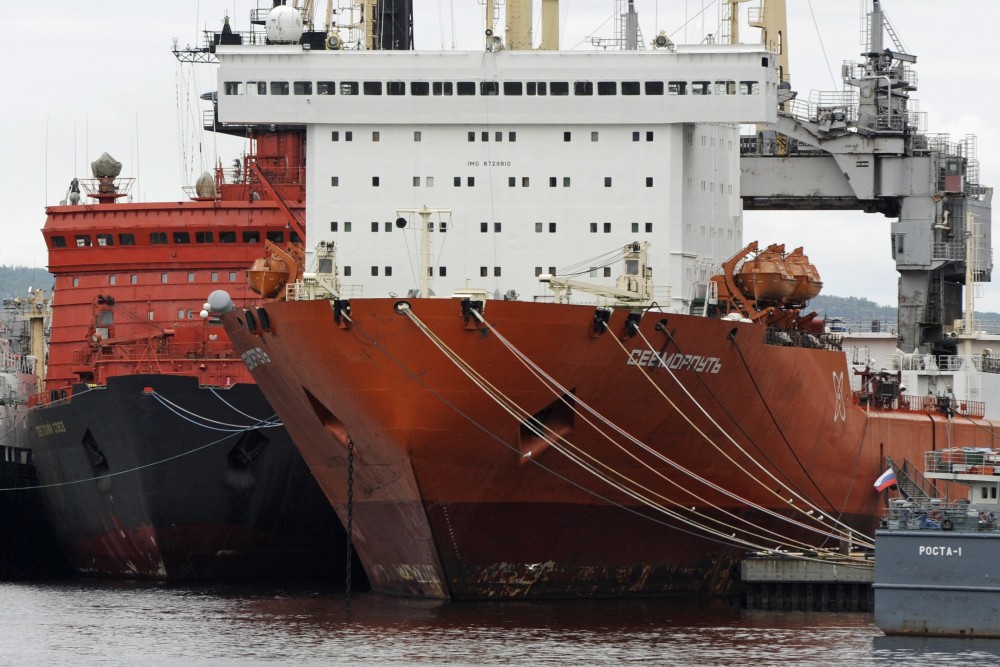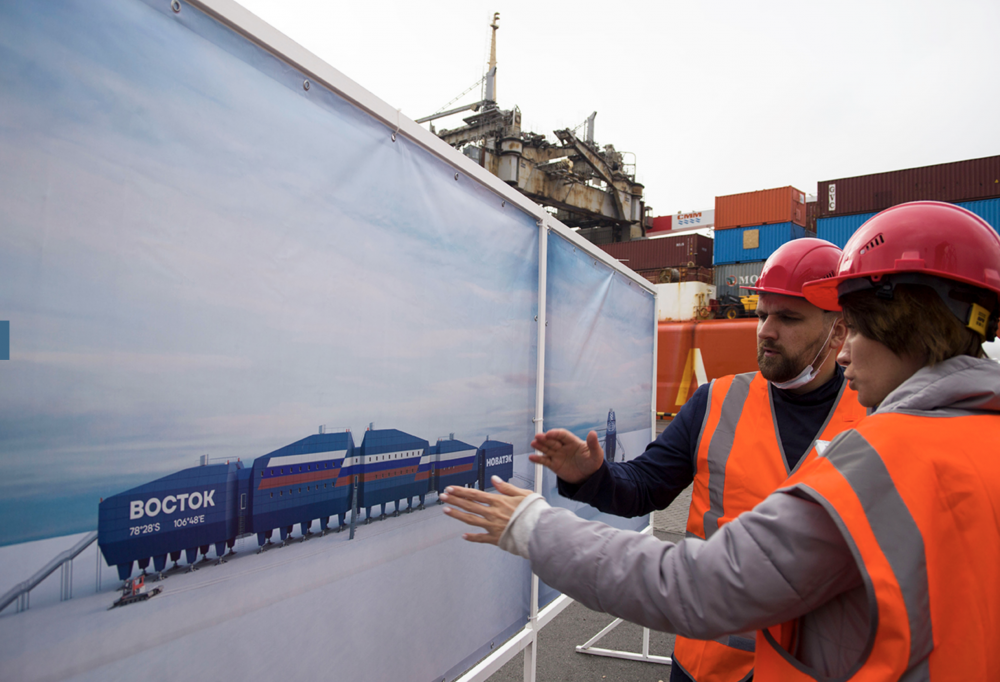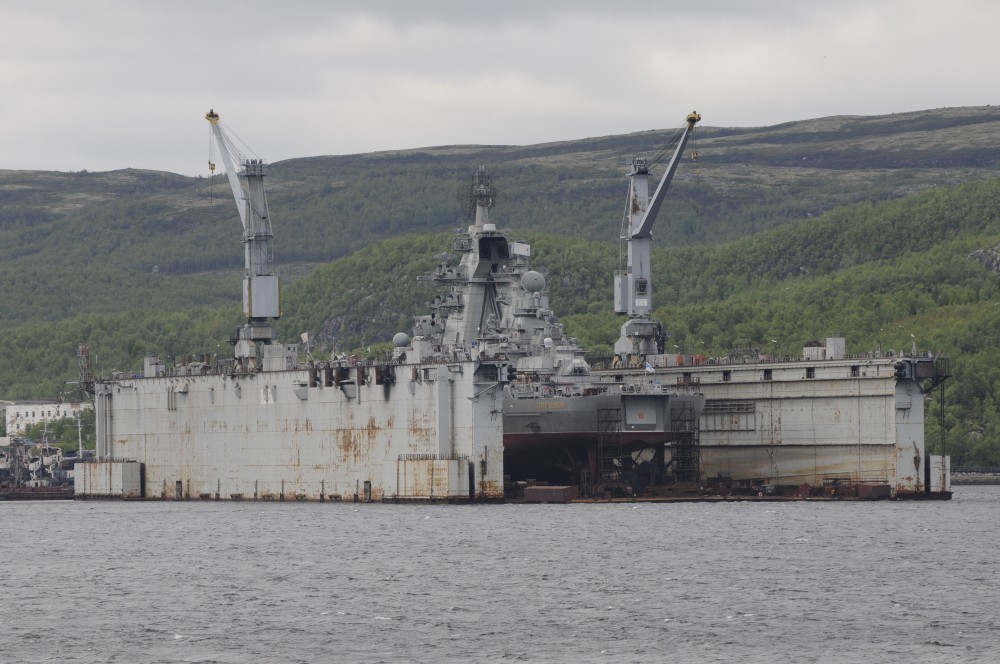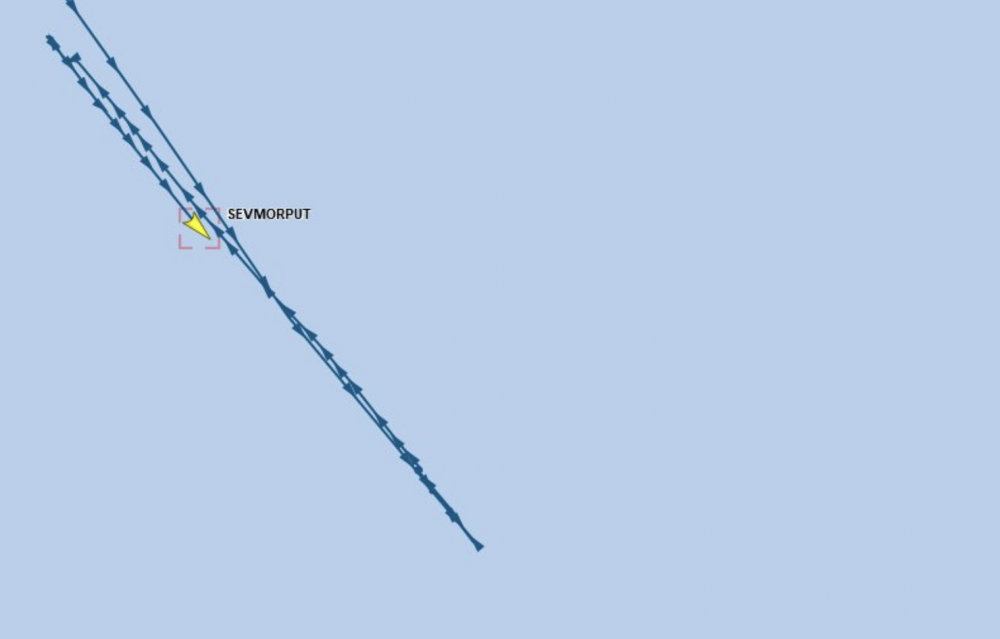Well, this is it, after returning to Russia to get the propeller welded back on.

Posted on 11/28/2020 6:51:08 PM PST by texas booster
Time is running out for delivery of 5,000 tons of containers and modules for the Vostok station to Antarctica. Sevmporput had an estimated arrival at Prydz Bay on the eastern shores of the continent on November 20. However, since mid-October the giant nuclear-powered container carrier has sailed zigzag outside the Angolan coast in the South-Atlantic with a broken propeller.
Rosatomflot, the operator of Russia’s state-owned fleet of civilian nuclear-powered vessels, chose to keep silent about the trouble and has not answered any questions on the issue from The Barents Observer. Social media sites, however, had a lively debate about the reasons for the breakdown. As previously reported, it became clear that a propeller blade had fallen off. Divers flew to Angola to assist in cutting off a second blade in hope of restoring the balance.
Since the ship is nuclear-powered it couldn’t make port call, but had to stay outside the 12-nautical miles off the coast.
Now, newspaper Kommersant can inform that the divers’ repair attempts were unsuccessful and as the time-window for reaching the Antarctica summer season is about to close, it is decided to call Sevmorput home.
The giant ship will sail to St. Petersburg to unload the modules and containers, before entering dry-dock for repairs.
Icebreaker Kapitan Dranitsyn, which left Murmansk on September 27th and teamed up with Sevmorput in the Atlantic the second week of October, has set sail for home. The icebreaker waited a few days when Sevmorput got troubled outside Angola but soon continued lonely on the voyage south to King Håkon VII Sea, off the coast of Queen Maud Land in Antarctica two weeks ago. Onboard are 98 specialists and construction workers for the Vostok station. On Thursday, however, the ship is outside Cape Town with a northbound course and the destination is no longer Antarctica, but St. Petersburg according to MarineTraffic.com.
Port call to St. Petersburg is set to be December 31, much longer than such a voyage from South Africa normally would take. It is likely because the icebreaker will assist Sevmorput, which has reduced speed and maneuverability.
The ship was docked in St. Petersburg in January this year, shafts were shifted and other maintenance work carried out. A full survey of the hull, propeller and shafts were done. This is a very strong propeller system designed to sail in ice-covered waters in the Arctic. 32-year old
Sevmorput (Russian abbreviation for Northern Sea Route) is 32-year old and is powered by a single reactor of the KLT-40 type, similar to the the reactor onboard the icebreakers Taymyr and Vaygach.
The vessel is well suited to deliver cargo along the north coast of Siberia, where little harbor infrastructure is developed. Sailing in the ice, lighters and other cargo can be unloaded on the ice outside the coast and towed to shore on the ice by trucks or bulldozers. But that wasn’t either a big success in the troubled economic period following the break-up of the Soviet Union. For several periods in the 1990s and 2000s, the ship stayed in port in Murmansk for years without sailing. In 2008, the ship was officially laid-up and in 2012 the plan was to scrap it. In 2013, however, it was decided to do renovation and in autumn 2015, the ship was again test-sailing the Barents Sea. The following year, Sevmorput was back in regular service and has in the lastest years delivered cargo to military installations in the Russian Arctic, as well as to the petroleum development along the Siberian coast. Equipment has been delivered to the Pavlovsk lead-zink mine development on Novaya Zemlya, and both in 2019 and in 2020, voyages with seafood cargo have taken place between Petropavlovsk in the Far East and St. Petersburg via the Northern Sea Route and around Scandinavia.
Sevmorput can carry 74 lighters or 1324 containers.
After a 2015 upgrade and safety evaluation, the reactor’s service life was prolonged with 150,000 hours aimed at keeping the vessel in operation until 2024.
The Vostok (восток means East in Russian) research station is located at the geomagnetic South Pole in Princess Elizabeth Land, which is the eastern part of the continent.
The station was founded by the Soviet Union in 1957. The first buildings are long gone under the snow that accumulates by about 7 cm a year in this part of Antarctica. New buildings were later erected, but nothing near the new modern complex now underway onboard Sevmorput. The modules are supposed to be put ashore at the Russian Progress station on the shore of Prydz Bay. The transport to the inland Vostok will be pulled by snow-tractors.
Financially, the new research station and its transportation are carried out on the basis of a public-private partnership with Novatek, Russia's largest private-owned natural gas company producing LNG in Sabetta on the Yamal Peninsula and currently constructing the giant Kola Yard in Belokamenka outside Murmansk.
Well, this is it, after returning to Russia to get the propeller welded back on.

lol. their sh*t is all brokeski.
where’s that sukoi guy that used to like to post thread after thread about scary Russian military hardware?
Someone forgot the Cotter Pin ? LOL
I think it lost a screw.

Russia's new Vostok-II research station was displayed in St. Petersburg before departure earlier in October. “Sevmorput” in the background. Photo: Roshydromet
In Russia, the propeller screws you...
ship screws that are broken by water are sooo Russian navy.


The floating dock at yard No. 82 in Roslyakovo a few years before it sank. Here with the nuclear-powered battle cruiser “Pyotr Velikiy”. Photo: Thomas Nilsen
“Kommersant can inform that the divers’ repair attempts were unsuccessful”
Not a surprise. Russian divers were not even able to get down 300’to their own sub the Krusk which had blown itself up. They fiddled around and allowed the crew to die then brought in North Sea oil field saturation divers to do the job for them.
But bless their hearts they did finally succeed in placing a flag on the bottom at 1000’ last summer.
Hate to tell them that we American saturation divers were welding pipelines in a hyperbaric environment at 1200’ back in 1982. BTW, that was being done per welding code certification as stringent as nuke plants require.

Zig-zag route in the South-Atlantic west of Africa on Sunday Oct 18.
“Isn’t losing a screw on a nuclear ship kinda embarrassing?”
I was recovering on the hospital Sanctuary near RVN, when they lost a propeller, also had another ship find, recover and replaced it.
Ships happen?
“Isn’t losing a screw on a nuclear ship kinda embarrassing?”
Screw not lost.


Andrei, you have lost another one?
DAM! I am laughing so friggan hard I think I am gonna pee my pants!
righty tightee lefty loosey
Disclaimer: Opinions posted on Free Republic are those of the individual posters and do not necessarily represent the opinion of Free Republic or its management. All materials posted herein are protected by copyright law and the exemption for fair use of copyrighted works.